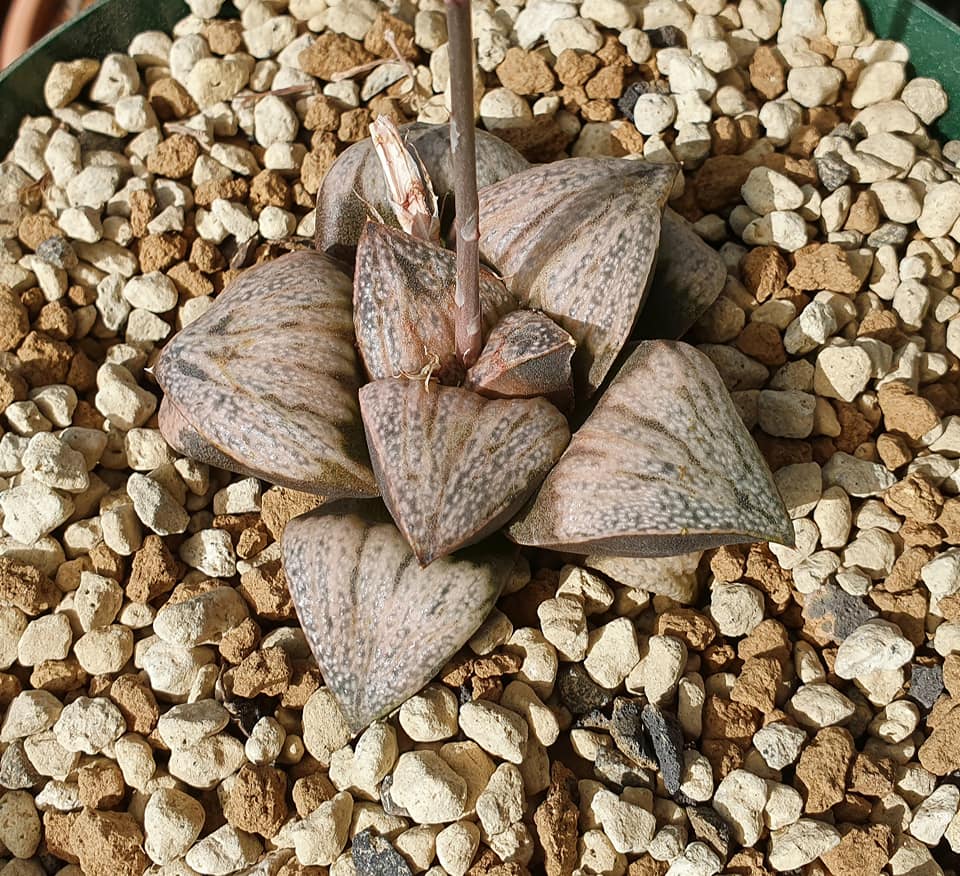Emile Heunis
Hi Bruce, I would like to hear your opinion on the flowering time of H. magnifica var. splendens, Haworthia truncata and some other species whilst it is very dry at the habitats where they grow. (I include two photos of the species mentioned) Without rain, the plants have lost their condition, yet they use water and energy to produce their flowers. On top of that, other insects and animals have limited choice to their feeding menu and would gladly include a haworthia flower stalk. I keep in mind that the survival of a plant at a particular site depends on the existence and activities of pollinators. Could it be that these plants adapted to the availability of pollinators in summer and have found a way to preserve enough moisture to flower during the dry months of the year?


Bruce Bayer
What a nice surprise Emile. Grower extraordinaire! Splendens flowers like all mirabilis (?) in February. Retusa (flowers October), emelyae in the Karoo flowers October. I think truncata also flowers summer, but really irrelevant here. In my current ideas is that splendens (mirabilis), retusa (turgida, pygmaea) and emelyae are in reality, one true basic life form i.e. species. Rain is not a significant (note – significant) factor in flowering time.
Emile Heunis
Thank you for the complement. I have had you as a mentor and inspiration, visiting Karoo Botanical Gardens in the late 1970’s and early 80’s. I bought many beautifully grown haworthias when you had sales at KBG in the 80’s. I use the names as I have come to know them. Please appreciate that I have no understanding of the species concept in Haworthia or any plant form. I have always avoided any comment on the topic because of that. As an artist with a life long interest in nature, particularly succulents, my interest lies in their shape, form and colour, qualities that allow them to survive in nature. As most human thinking support (sadly), all that is to please Homo, the one that can determine the existence of all other life forms. My love for nature brings many questions. The magnitude, the diversity and how it exist together in peace and at war with one another. Hence my question. How did it come that ,in this case, H. splendens survived on a particular spot whilst that spot is not ‘ideal for producing flowers. As it is, it is ideal!! The plants are in excellent condition, at least the two times I could go there, and as can be seen in most photos taken by other enthusiasts. Could you please explain your concept of ‘significant factors’ that do play a role?
Bruce Bayer
Thank so much Emile. Funny I saw “splendens” originally a short way from the now fenced spot. They were larger and more colorful in a sandier environment. While we have a mechanistic concept of species and their environment we will never understand either of these. A species is a fractal system based on metaphysical realities with infinite possibilities. The world too is a “living” thing. There are five main energy systems (elements) in creation related to the five regular figures that can be fitted to a sphere – hence the “tree of life”. Plants have one of these, insects two, snakes reptiles birds, three, mammals four and man at top of creation five. Always infinite possibilities with the energy fields starting at math zero or infinite zero. There is far more to creation that our absurd “science” belief system allows.


Emile as an extra. I have seen out of season flowers on both mirabilis and retusa and what is more have encountered field hybrids of these as well as of these with floribunda. The complexity of the interaction between all these so-called “species” is incredible.
Original correspondence on Facebook 27 January 2021. ♦
